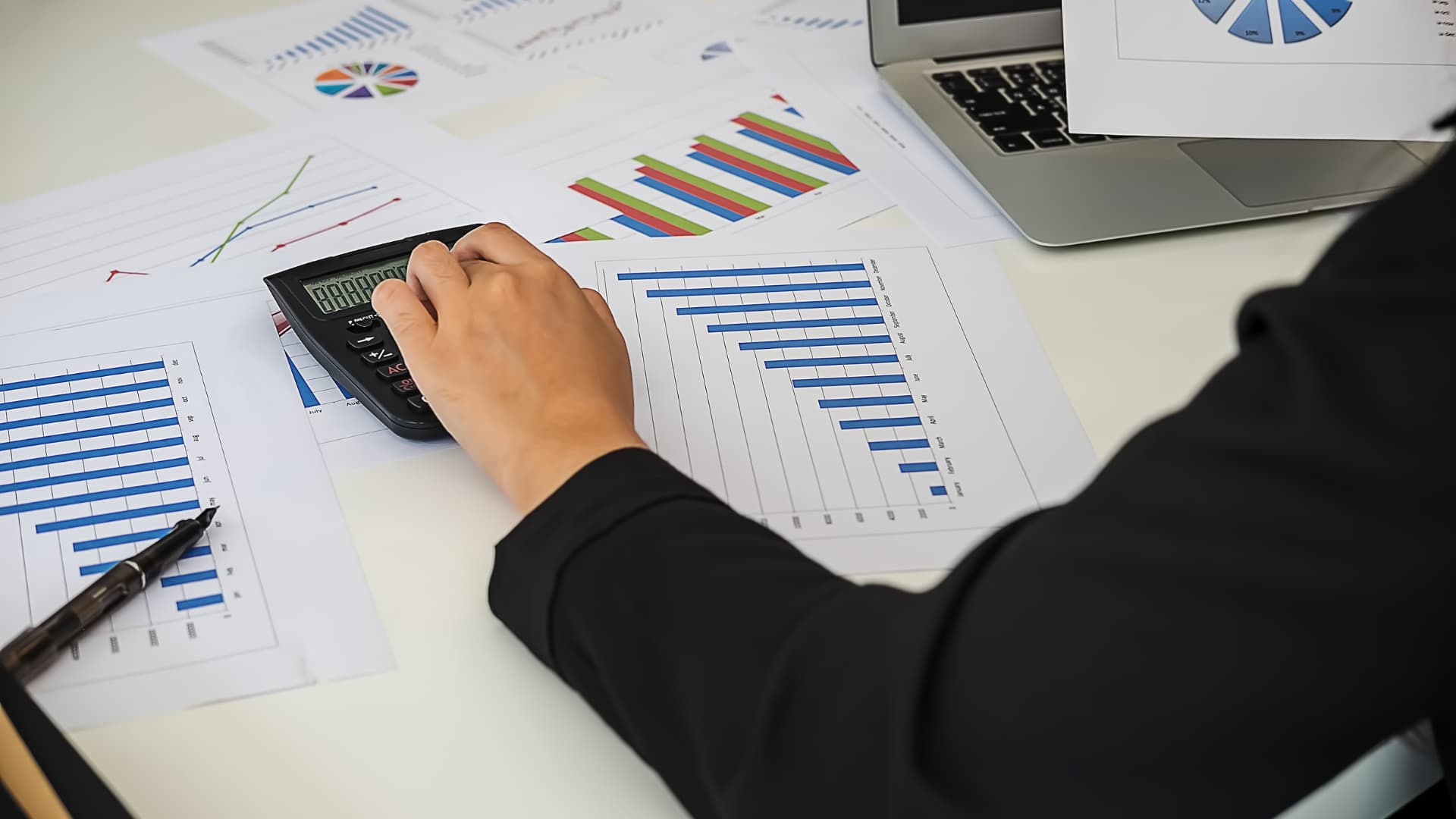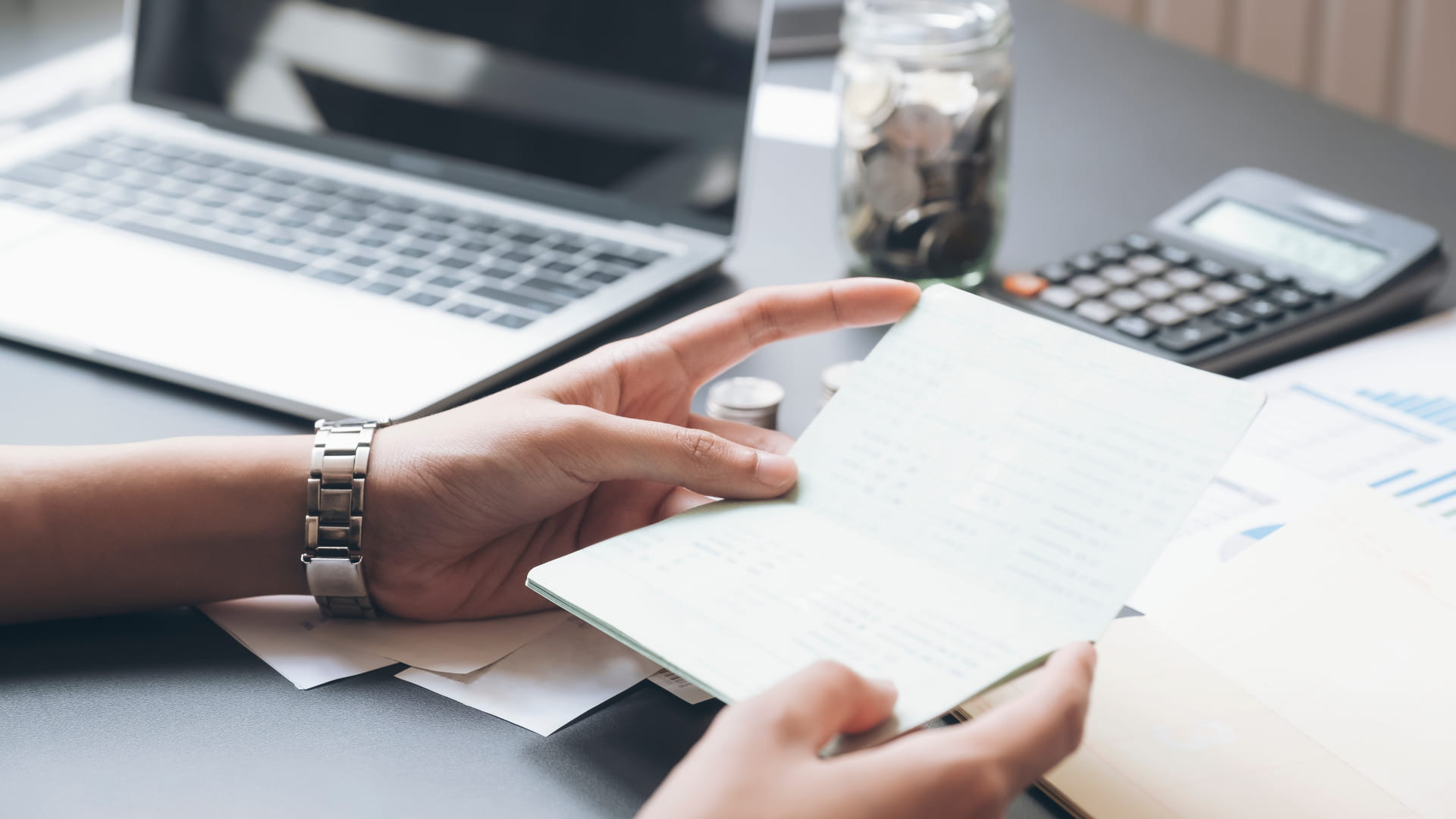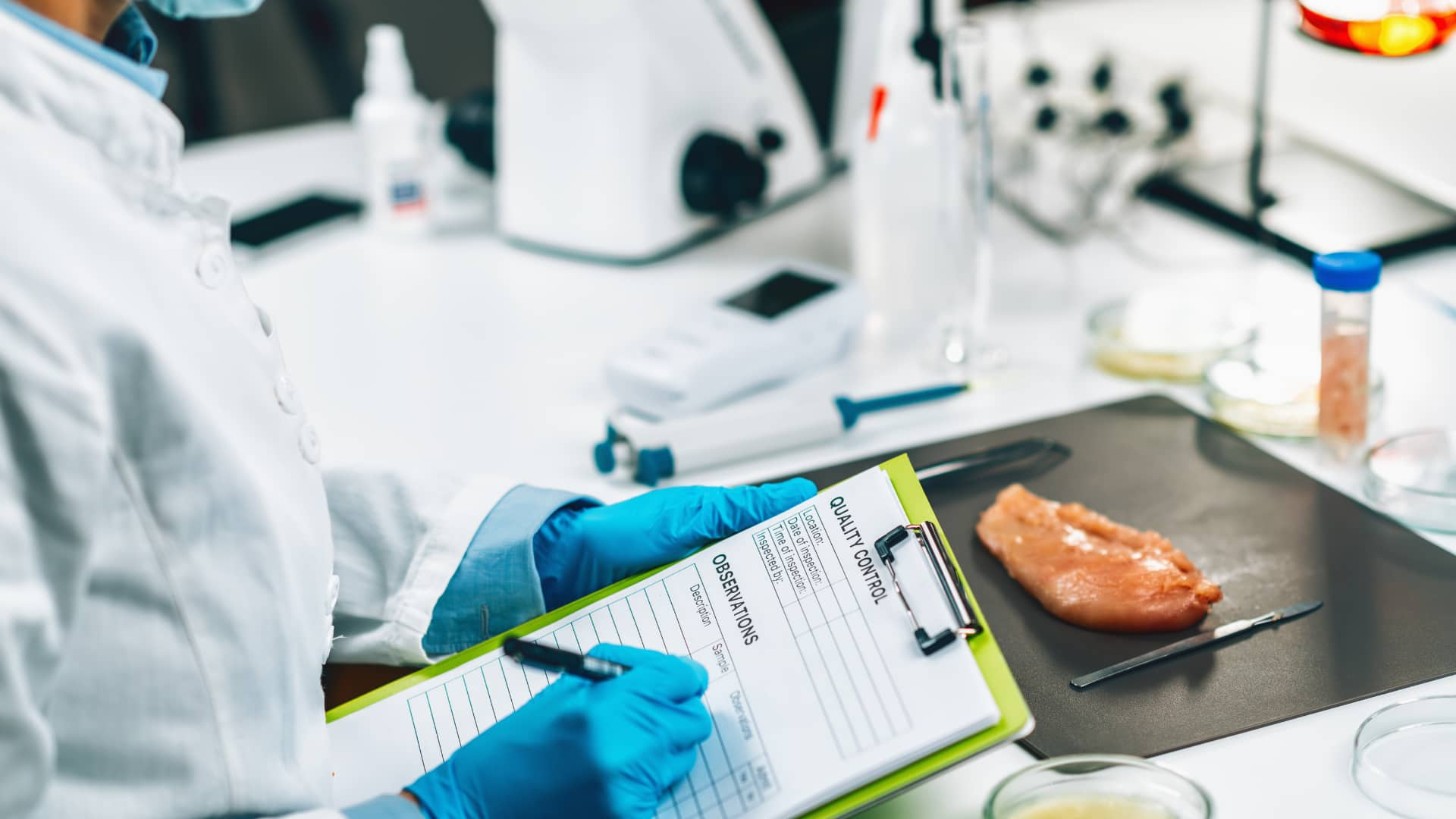What is direct material cost? This is one of the important factors in the production process, directly affecting the product price and profit of the business. Understanding this cost and knowing how to account for it accurately will help businesses control costs effectively, thereby improving productivity and minimizing waste. In this article, we will explain in detail about direct material cost and guide you on how to account for this cost in a simple and easy-to-apply way.
1. What is direct material cost?
1.1 What is direct material cost?
Direct material cost (Direct Materials Cost) is the total cost related to the purchase and use of raw materials, direct materials to produce, manufacture products or perform the business's services. These costs include the cost of purchasing raw materials, transportation costs, storage and processing of raw materials before they are put into production.
Because of its direct relevance to the product or service, direct material cost can be clearly identified and accurately allocated to each unit of product or service.
Related costs incurred:
- Raw materials: These are basic materials such as metal, wood, plastic… used in the production process.
- Fuel: Fuels needed for the production process, such as electricity, gas, oil... are used directly in production activities.
- Shipping and storage costs: The costs of transporting raw materials from suppliers to the company's warehouse are also included in direct material costs.
Refer to Circular 200/2014/TT-BTC: According to Circular 200/2014/TT-BTC, direct material costs are costs that can be allocated directly to a product or service without having to be estimated or allocated across multiple criteria like indirect costs. This means that businesses can easily calculate this cost for each product they produce.
1.2 Direct calculation
One of the important features of direct material cost can be specifically identified and allocated to each unit of product or service. For example, in a production line, the cost of raw materials for each product would be calculated based on the quantity of raw materials consumed in the production of that product.
1.3 Distinguish from indirect material costs
It is important to distinguish direct material cost with indirect material costsWhile direct costs can be easily allocated to individual products or services, indirect costs cannot be specifically allocated. These costs include items such as factory management costs, equipment maintenance costs, and manufacturing overhead.
1.4 Important role
Direct material cost often accounts for a large proportion of total production costs and plays an important role in determining product cost. Good control of this cost helps businesses optimize profits, improve production efficiency and determine reasonable selling prices for their products. If the cost of direct materials is too high, the cost of products will increase, affecting the competitiveness of businesses in the market.

2. Classification of direct material costs
Direct material costs are an important part of determining product cost. These are the costs that businesses have to pay to purchase raw materials, and these costs are directly related to the product manufacturing process. Classifying raw material costs helps businesses easily control costs and optimize the production process. Below are the types of direct material costs:
2.1 Main raw material costs:
- Concept: Main material costs are raw materials, materials, or purchased semi-finished products, structural materials… that make up the main entity of the product. These are the basic components that make up the finished product.
- Cost and management standards: The cost of main raw materials is clearly established, making it easy for businesses to monitor and control. Regular management of main raw material costs will help optimize production efficiency and reduce waste.
- Notes when calculating costs: When calculating the cost of primary materials, only the value of the actual materials used in the production process is taken into account. This means that only the materials used to create the final product are included in the cost.
2.2 Cost of auxiliary materials (other materials):
- Concept: The cost of auxiliary materials is the materials combined with the main materials to change the color, shape, increase quality, aesthetics, or stimulate customer tastes. Auxiliary materials can also help improve production operations, ensuring the production process runs smoothly.
- Characteristic: Although not the main ingredient of the product, auxiliary materials play an important role in increasing the value of the product, thereby increasing competitiveness in the market. For example, in the F&B industry, spices and flavor enhancers for dishes are also auxiliary materials.
2.3 Fuel costs:
- Concept: Fuel costs are the costs of materials that provide energy for the production process. This could be electricity, gasoline, gas, or other fuels used in the production process.
- Characteristic: Fuel costs are less common than other raw material costs but are very important for specific manufacturing businesses, such as construction, bridges, or large-scale industrial production. Controlling fuel costs helps businesses reduce production costs and improve operating efficiency.
Understanding and classifying What is direct material cost? helps businesses, especially accounting departments and business owners, to calculate and manage production costs more easily. This not only helps to strictly control the budget but also helps to make reasonable production decisions, save costs and optimize profits.

3. Accounting for direct material costs
Correct and complete accounting of direct material costs not only helps businesses determine the exact cost, but also supports effective management of materials, avoiding waste in the production process. Below is a method of accounting for direct material costs for businesses:
3.1 Account 621 – Direct material and raw material costs
Intended use:
Account 621 is used to reflect the cost of raw materials and supplies used directly in the production of products or provision of services of the enterprise.
Accounting principles:
- Reflects actual costs: Record the actual value of raw materials and supplies used directly during the period.
- Cost transfer: At the end of the period, transfer costs to the appropriate account such as account 154 (Work in progress) or account 631 (Production cost).
- Handling of Overcharges: Raw material costs exceeding the normal level are transferred to account 632 (Cost of goods sold).
Content and structure of account 621:
- Debit side: Record the actual value of raw materials and supplies used directly during the period.
- Creditor:
- Transfer expenses to related accounts such as account 154 or account 631.
- Transfer excess costs to account 632.
- Record the value of unused raw materials and supplies returned to the warehouse.
No ending balance
Account 621 has no ending balance because all costs are transferred to related accounts to determine the cost of products or services.
3.2 Method of recording and collecting costs:
- Directly by user: Record costs based on specific usage.
- General set: Recognize overhead costs for the entire production or service process when they cannot be directly identified.
3.3 Specific accounting cases:
- Export of raw materials used for production: Note: Debit account 621 – Credit account 152.
- Buy raw materials for immediate use without going through warehousing:
- If VAT is deductible: Debit account 621 – Debit account 133 – Credit account 111/112/331.
- If VAT is not deductible: Debit account 621 – Credit account 111/112/331.
- Unused raw materials returned to warehouse: Note: Debit account 152 – Credit account 621.
- Raw material costs exceed normal levels: Transfer: Debit account 632 – Credit account 621.
- Raw materials used for business cooperation contract:
- When costs arise: Debit account 621 – Debit account 133 – Credit account 111/112/331.
- Cost allocation: Debit account 138 – Credit account 621 – Credit account 3331.

3.4 Accounting documents used:
- Purchase invoice.
- Warehouse receipt, warehouse delivery note.
- Advance payment request, payment voucher.
3.5 Accounting for direct material costs using the method of regular declaration and periodic inventory:
Regular declaration method:
- Continuously record and reflect the cost of raw materials issued from warehouse throughout the accounting period.
- Advantage: Update cost information promptly, supporting effective management.
- Disadvantages: Need tight accounting and management system.
Periodic inventory method:
- Raw material costs are recorded based on ending inventory figures.
- Advantage: Simple, inexpensive.
- Disadvantages: Cost information is not updated continuously, affecting management.
4. What is direct materials cost management?
In the production process, direct material costs often account for a large proportion of total product costs. Therefore, effective management of this type of cost not only helps control the budget but also improves the efficiency of material use and optimizes the production process. Here are some ways to effectively manage material costs:
4.1 Building direct material cost standards
The importance of standards and estimates
Direct material cost standards are an indispensable factor in cost management and control. Establishing cost standards helps businesses accurately predict the amount of raw materials needed, thereby optimizing production costs. Estimating raw material costs also helps related departments such as accounting and production management have an overview of the costs required to produce a unit of product.
Methods of building standards
- Technical method: This is a method of establishing cost norms based on research and analysis of production processes, thereby accurately determining the amount of raw materials needed for each product unit. This method requires the participation of industry experts to calculate related technical factors.
- Historical data analysis methodBy analyzing cost data from previous periods, businesses can determine relatively accurate raw material cost standards. This method is based on assessing actual costs and using past data to forecast future costs.
- Adjustment method: This is a method that combines elements of the two methods above and adjusts to suit the conditions and changes in production. This method is often used when there is a change in technology or production scale.
Factors to consider when setting standards
- About quantity: The quantity of raw materials must be calculated accurately to avoid surplus or shortage of raw materials. Factors such as production efficiency, machine capacity, and wastage level need to be carefully considered.
- About price: The price of raw materials is also an important factor. Raw material prices can change over time and from different suppliers. Accurately calculating raw material prices will help businesses predict costs correctly.

4.2 Analysis of direct material cost variance
Compare actual costs with standard costs
After establishing cost norms, comparing actual costs with standard costs will help businesses evaluate production efficiency. If actual costs exceed standard costs, businesses need to find out the cause and take timely corrective measures.
Types of fluctuations
- General fluctuations: This is the overall change in raw material cost, which may be due to external factors such as changes in raw material prices in the market or changes in the manufacturing process.
- Price fluctuations: This fluctuation occurs when the price of raw materials changes, possibly due to changes in supply, demand, or other economic factors.
- Fluctuation in quantity: This variation occurs when the actual amount of raw materials used changes compared to the standard, possibly due to changes in labor productivity, machinery, or material loss during the production process.
Formula for calculating different types of fluctuations
- Price Variation = (Actual Price – Standard Price) × Actual Quantity
- Quantity variation = (Actual quantity – Standard quantity) × Standard price
4.3 Analyze the causes and propose solutions when there are adverse fluctuations
When there is an adverse change, businesses need to analyze the cause to find a solution. Possible causes include:
- Unforeseen changes in raw material prices.
- Inefficient production processes or waste in the use of raw materials.
- Objective factors such as market fluctuations or changes in supplier policies.
Possible solutions may include:
- Look for alternative suppliers to reduce raw material prices.
- Optimize production processes to reduce waste.
- Apply new technology or improve production processes to increase the efficiency of raw material use.

5. Measures to enhance the effectiveness of direct material cost management in enterprises
Increasing the efficiency of direct material cost management not only helps reduce waste but also contributes to improving the competitiveness of enterprises. So what are the management measures that enterprises can apply? Let's explore the following measures with Bizzi:
5.1 Tight control over purchasing process
One of the most effective ways to minimize direct material costs is to select reputable suppliers and negotiate good prices. The purchasing process needs to be strictly controlled, from determining raw material needs, finding suitable suppliers to negotiating and signing contracts. Choosing quality suppliers will help minimize unnecessary costs.
5.2 Effective warehouse management
Inventory management is an important factor in minimizing direct material costs. Some necessary measures include:
- Strictly implement delivery and import-export procedures: Ensure all transactions related to raw materials are recorded accurately, avoiding errors and losses.
- Periodic inventory and inventory determination: Inventory helps determine the amount of remaining raw materials, thereby planning for resupply and effective use.
- Reconcile inventory books with accounting books: This helps ensure accuracy in recording and reporting data.
5.3 Control of consumption standards
Controlling consumption rates helps businesses compare the actual amount of raw materials used with the set standards. In this way, businesses can detect differences and find their causes, thereby adjusting to optimize the use of raw materials and minimize waste.
5.4 Strictly manage documents
Ensuring the validity and legality of documents such as invoices and delivery notes is very important in managing direct material costs. Managing documents helps businesses have full information to compare and verify arising costs, avoiding unwanted errors.
5.5 Focus on the quality of input materials
The quality of input materials has a direct impact on production costs. Therefore, checking the quality of raw materials before entering the warehouse is an important measure. Poor quality raw materials can lead to re-production, increasing unnecessary costs.

5.6 Minimize loss and waste during production and storage
Minimizing loss and waste is key to controlling direct material costs. Businesses need to have strict processes in place to track, control, and optimize the use of materials throughout the production and storage process.
5.7 Using accounting and financial software
Enterprises can use accounting and financial software to automate accounting processes, minimize errors and improve the efficiency of material cost management. In addition, modern solutions such as Bizzi - an extension of accounting software - help enterprises save time processing invoices, increase transparency and optimize operating costs.
Using a comprehensive cost management solution like Bizzi helps businesses track, collect and allocate material costs automatically and accurately. This software helps businesses control costs effectively, minimize errors and save time in reporting and analysis.
6. Advantages and disadvantages of effective direct material cost management
Effective management of direct material costs brings many benefits to businesses such as cost savings, improved production efficiency and increased competitiveness. However, this process also has certain challenges, requiring businesses to have a good control system and close coordination between related departments:
Advantage: Effective management of direct material costs brings many benefits, including transparency in financial reporting, the ability to accurately analyze product costs, and better cost control. This makes it easier for businesses to calculate and allocate costs more reasonably.
Limit: However, this cost management also has some limitations. Cost classification can sometimes be difficult, especially in some complex cases. Moreover, this method may not fully reflect costs if indirect costs are omitted. In addition, businesses need to update information regularly due to price fluctuations and dependence on the supply market.
7. Conclusion
Understanding what direct material costs are plays a very important role in the production and financial management of a business. This is the cost that accounts for the majority of the total production cost, directly affecting the product price and profit of the business. Controlling and managing this cost effectively helps businesses reduce waste, grow sustainably and improve competitiveness.
Combining financial accounting and management accounting in effective cost management
To optimize the management of direct material costs, the combination of financial accounting and management accounting is essential. Financial accounting provides an overview of cash flow and expenses, while management accounting helps analyze details and provide appropriate adjustment strategies. This coordination helps businesses not only control costs better but also make more effective strategic decisions in the production process.
Solutions and tools to support material cost management
To effectively manage direct material costs, businesses can use supporting tools and software. One of the typical tools is Bizzi, a solution that helps businesses manage material costs, optimize production processes and minimize waste. Bizzi provides detailed reports, helping businesses grasp the cost situation easily and make smart management decisions.

Businesses register for trial at: https://bizzi.vn/dang-ky-dung-thu/
Tools like Bizzi help automate accounting processes, ensuring accuracy and speed in recording and analyzing expenses. This not only saves businesses time but also improves cost management efficiency, helping to optimize profits.


